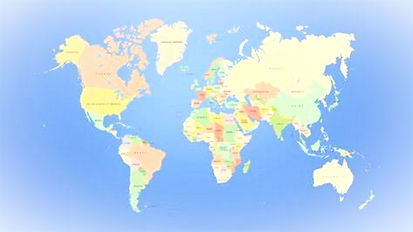Healing the World
Combining spiritual and environmental education for youth
Reflection: Practical applications
During my masters, I took a global Studies course that required me to prepare an environmental education piece for a school or community. I told my professor about my role as Youth Program chair on the organizational team of Interfaith Harmony Halifax. It was during the Covid 19 Pandemic, and we had a number of teens participating in a multi pronged project. For the assignment, I designed an environmental session for young Jewish teens.
My professor was very open to me working on it for credit, and providing me with feedback. The associated notes were very detailed and my slides included a lot of information from the course itself, the biology of climate change, and the cost of consumption and convenience. In theory, the class I had developed was a mini Jewish version of the course material. The theoretical version isn't always practical, of course. I had recruited two young adults to help me facilitate the class, both engaged spiritually and strong environmentalists for whom this was an engaging project. We felt that it was too dense with information for young teens, and we wanted to get them talking. We spoke about consumption, but I felt it was more important to ask them questions about what they would be prepared to give up, or what they were worried about. I wanted to know how they connected to the Earth both as people and as Jews. What biblical stories had natural elements that were important? What holidays have to do with the cycles of nature? What does the concept of Tikkun Olam (Healing the World,) really speak to? Here I have taken a sample slide from the presentation.When I spoke with my professor about my real world changes to the theoretical assignment, he was disappointed that I had taken a step back in challenging my students not to take more far reaching ecological action as a group. He felt that I might be underestimating the youth of today.
I am mindful of the lesson I learned from intersectional theory and understanding the complex mix of diversity and identity.
In theory, my professor had one objective- to get people engaged in radical environmental education and action. In practice I had more than one interest. I was preparing an environmental educational project that spoke to their cultural identity and knowledge base, but in practice I was also preparing them for an interfaith experience. Even more to the point, I was hoping that experience might create relationships between communities into the future.
My professor wasn't wrong though. I had made the framework less radical in order to be palatable not only to my community but to all the others. It is a good reminder that we need to watch how much we can concede, how far the compromise goes before we have given up too much.

An interactive interfaith project asking the question,
How does my faith or spiritual tradition
connect me with the Earth?
More than 100 youth from 8 spiritual traditions participated in the project in some way.
The youth engagement committee of IHH partnered with leaders from faith-based schools and youth groups for a project that took place in several parts.
Participating communities are:
Church of Jesus Christ of Latter Day Saints, Hindu, Islam, Jewish, Protestant, Pagan, Universalist Unitarian and United Church.
Part 1: Discussion or workshop on how your faith interacts with sustaining the earth. For each school/youth group or community on their own to decide what is the most appropriate age group and setting. Some chose online learning, others classroom participation or youth group in person.
Within our own spiritual community:
What are our beliefs around the creation of the Earth?
What is our role in the health and sustainability of the earth (ie are we Guardians? Cultivators? Protectors?
Is the Earth for us to use? To share?
How do natural elements play a role in our stories or symbols of faith? Water, Earth, Fire and Air?
Part 2: Slide Presentation Overview and meet and greet(Zoom discussion online)Every community submitted a slide summarizing their traditions’ views and practices connecting them with the earth. The first 30 minutes of the Zoom call was a series of youth presenters, explaining their traditional views to the rest. The participants were separated into breakouts so that discussion could be facilitated within smaller groups. Each community provided one or two facilitators (Youth leaders and community educators) to guide the youth conversations. Many groups discussed not only ecological stress in the world, but also social problems that our traditions need to address together. We had 24 youth on the call, for a total of 33 participants for the conversation. Feedback was very positive.
Part 3: Mosaic Painting(in community)A youth artist, Calla Quist, developed our concept into a single image incorporating both natural and religious symbols of our participating communities. Communities received between 12 and 24 mini canvases, that had been outlined as part of a grid. They were given a random selection, and guides for colour but the freedom to paint whatever they wished within those parameters. The students did not see the whole image until the full project was revealed. The canvases were distributed to each community leader and painted in whatever way worked the best for each community, following public health guidelines. The final project was assembled by the artist and volunteers, at Studio 14, owned by Jennifer Jacobson, who provided materials for the project at cost, and assembled the squares together. Calla Quist did the final touch-ups for the art piece. Each community sent in photographs of their workshops and painting, along with singed media release forms. Boaz Wexler compiled the photos into a short slideshow/film of the experience. The final mosaic painting will be displayed at a local Public library, so that all the participating youth, their families and the general public could see it and learn more about Interfaith Harmony Halifax, and UN World Interfaith Harmony.
